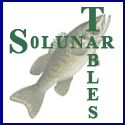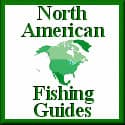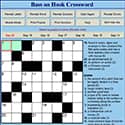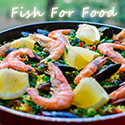Bass on Hook is Supported by our readers. As an Amazon Associate We earn commissions from qualifying purchases. For more informtion read our Amazon Affiliate Disclosure and Affiliate Disclosure Policies.
Fishing The Gitzit
By Leo Watson
A lot of people don't know that the first tube lure ever produced was the "Gitzit".
It was first produced by Bobby Garland, hence the name "Bobby Garland's Gitzit".
As you are probably well aware of there are many companies that offer tube lures, however there is only one original "Gitzit".
The "Gitzit" has been often imitated but, has never been duplicated.
I have fished many different manufacturers tube baits in the past.
In this authors opinion no one can or ever will match the feel of this soft plastic tube bait or the color consistency.
The new home of Bobby Garland's "Gitzit" is Bud'z Fishin Ways.
Having a working knowledge of the owners of this company I can assure you that you will not find two harder working people who are dedicated to perfection with every "Gitzit" produced!
With 64 colors of "Gitzits" to produce in both 2 ½"and 3 ¾" sizes they do have their hands full.
For those of you that don't know, these "Gitzits" are all hand made!!
It is a painstaking process that I have been lucky enough to be part of many times.
I know the quality of product that Bud'z Fishin Way's produces.
I consider myself very lucky to be a member of their Pro Staff.
As a member of their Pro Staff I have the luxury of working side by side with the owners on a regular basis.
I spend a great amount of time on the water doing research and development work on the "Gitzit" and other products that are offered on the market by Bud'z Fishin Way'z.
Through my years of experience in bass fishing I give them in formidable feed back about their products and suggestions for changes or modifications to their products.
As I have mentioned before there is more to Bud'z Fishin Way's than just "Gitzits"
Lets Talk About Fishing The Gitzit
Enough talk about companies, lets talk fishing ( My favorite subject)!
A lot of people consider a "Gitzit" a bedding bass bait only.
I can remember watching TV shows of fisherman like Guido Hibdon, Shaw Grigsby and Fish Fishbourne all fishing bedding using some type of tube bait.
This has led to the misconception that this is the only lure to catch bedding bass and also the only time of year this lure will produce.
Nothing could be further from the truth!
The "Gitzit" can be used Spring through the Fall.
I usually start when the water reaches near 60 degrees.
I continue to use this lure throughout the Summer and into the Fall until the water gets to cold ( Below 60 degrees ).
What Equipment Is Best To Fish The Gitzit
Let's talk a little bit about the equipment used to fish the "Gitzit" properly.
The equipment I use is a 5'9"- 6'6", medium light to medium action rod.
The rods that I personally use are Team Daiwa rods matched with up with Team Daiwa or Daiwa S.S. series spinning reels.
As far as line size goes, here is another misconception.
The idea that you can only use 6, 8 or 10 lb. test line is totally false.
With the advent of the new "Braided" or super lines you can use much heavier line now.
I am now fishing 20-lb. test while fishing a 3 ¾" "Gitzit" with just a ⅙ oz. weight.
On 20 lb. braided line I can cast as well as if I was using 8-lb. monofilament.
This is due to the advancement in line technology.
To me braided line is as critical to catching bass as my rod and reel when using this bait.
The amount of feel that is generated with braided line and proper rod and reel set up is a big part of catching bass other people would never catch.
With monofilament there is as much as 20% stretch compared to approx. 2% with braided.
I know for a fact on days when the bite is extremely light or conditions ultra tough with me fishing braided I will repeatedly catch more bass than anyone using mono.
It must be obvious by now that I am a big fan of braided lines.
I use them exclusively when "Gitzit" fishing, but not for fishing all lures.
It has its place as well as mono does in my bass fishing arsenal.
Now lets spend a little time talking about weight selection in fishing the "Gitzit".
Weight Guidelines For Fishing Gitzits
Weight guidelines for "Gitzits" fall in line with that of worm fishing.
For me I use:
⅙ oz. weight for depths down to 6'-8'
⅛ oz. for 6'-12' of water
3⁄16 oz. for 10'-16' of water
This is only a gauge.
There are many other factors to be considered for weight selection.
Here are a few variables to consider:
Cover - whether it is wood, vegetation etc.
Wind - The velocity it blows will have a major impact on your weight selection.
Remember you only want enough weight to keep your lure in contact with the bottom.
The lighter the weight the better.
You have to always keep in mind what your bait is supposed imitate.
The "Gitzit's" silhouette can have a shad like appearance and also a crawfish appearance as its tentacles pulsate as it falls.
This is where proper weighting is crucial.
Color Selections For Gitzit Fishing
It's color selection time!
This is a big ,big topic.
I myself try to keep my color selection as simple as possible.
Let's start with the simple basic knowledge that in clear water you want a clear or translucent color.
You want to stick with your shad colors if shad is their baitfish.
Some colors along this line would be smoke, pearl and pearl blue.
Two of my favorites for this situation would be:
Bud'z Fishin Way'z 2 ½" or 3 ¾" "Gitzits" stock number 103
smoke with silver flake (dynamite in clear water to stained water with clear skies)
103-G smoke with gold flake ( great in clear to stained water with cloudy skies)
105 - pearl white ( good all around color )
For stained or muddy water you either want a darker color or a super bright color.
Colors along this line would be stock numbers:
430 - Black with chartreuse tail ( a go to color with dark skies coupled with stained to muddy water )
295 - purple with blue flakes ( this is a good all around color that always works )
Around a weed or submerged vegetation my colors of choice include:
200 - w watermelon with black flake (a killer in the weeds )
220 - pumpkin with green and black flakes ( good in vegetation or around wood )
410-I pumpkin with chartreuse tail ( my favorite around vegetation bar none )
The 410-I is a Gitzit with yellow and black hand painted eyes.
This is something already sold in Bass Pro Shops.
These hand painted eyes are durable and in my opinion give the "Gitzit" a more life like appearance.
A special note here!
Keep your eye out for Bud'z Fishin Way'z to be doing something quite different with his eyed "Gitzits"!
That's all I can say about that for now.
I might have already said too much.
I can't help myself though, having been involved with the research and development of this product I can't wait for it to come out on the market.
Believe me I know how good it works!
I have already had great success catching bass with it!
The Gitzit Is Much More Than A Finesse Bait
On to another misconception.
The "Gitzit" is considered a finesse bait.
Denny Brauer won last years Bass Masters Classic flipping a 5" tube bait.
Flipping is hardly considered finesse fishing.
The "Gitzit" does shine as a bedding bass bait however, as previously stated it is much more than that!
I like to use it any place anyone is using a worm or other soft plastic bait bottom fishing.
Stop and think most people fish worms or lizards during the post spawn and summer patterns.
I hope they continue to think this way.
The more they fish their worms and lizards the easier it will be for us "Gitzit" fisherman to catch bass.
As the fish get pressured with other soft plastic baits they will hit "Gitzits" more readily.
You take a severe cold front condition on a heavily fished lake and give me a "Gitzit".
You know how skittish these fish can get.
I have proven to myself that the "Gitzit" is a good producer when a lizard, worm or even a jig fails.
All of the previously mentioned lures put out alot more pressure waves or vibration on the fall then the "Gitzit".
Under these harsh conditions alot of times the bass seem to want a more subtle presentation.
Right up the "Gitzits" alley!
Several Techniques To Make A Bass Strike A Gitzit
There are several techniques that can be employed to make a bass strike a "Gitzit".
Let's take the time to go over a few of them.
I sometimes fish the "Gitzit" very similar to a worm.
I employ a hopping technique.
This is an easy technique to pick up on but, not so easy to master.
You take a good angler and he or she will make any technique look easy.
There are a few keys to this technique:
rod position
weight size
line watching
feel
Lets go into a little more detail by starting with rod position.
Rod positioning is crucial in "Gitzit" fishing.
I always keep my rod in the 10:00 to 11:00 position.
By doing so this keeps a good "V" in your line and you will always be in the right position to reel down and set the hook.
In reference to weight size I have already covered that in depth earlier.
The last two are line watching and feel.
I would like to have a dollar for every time I have been asked "What does it feel like when a bass bites".
My answer would be, I don't know.
Some times you never feel the fish at all.
This is where line watching and feel come into play.
You have to be in constant contact with your lure.
If you can't feel it you must watch your line for any movement what so ever.
If your line moves when you're not moving or it jumps, SET THE HOOK!
If you pick your lure up off the bottom and it feels different than it should SET THE HOOK.!
Dragging, Flipping And Pitching Gitzits
Another method for fishing the "Gitzit" is the dragging technique (Similar to fishing a Carolina rig).
To do this is very simple.
Just rig your "Gitzit" Texas style let it settle to the bottom and slowly drag it along, pausing along on occasion.
To drag it just raise your rod tip slowly as described above.
The speed of drag and length of each pause will vary.
Let the fish tell you what they want.
Flipping and pitching a "Gitzit" wasn't a widely used technique until recently.
The Bass Masters Classic was won with this technique.
This can be employed around any type of cover, docks, matted vegetation, lay downs, etc.
As far as weighting goes, it is the same as always.
You go as light with your weight as you can but still feel the bottom and penetrate the cover.
Remember the heavier the cover the heavier every thing else must be.
This means hook size, line size, and rod stiffness.
When fishing heavy cover your rod has to have enough backbone to horse your fish out quickly.
Summary
In closing this article I hope I have provided you with more insight into "Gitzit" fishing.
The information as techniques have been proven over time.
Keep your eye out for more up coming articles written by myself.
Good luck,
Leo Watson
Pro Staff
Look for other articles written by Leo Watson in Leo's Pro Staff Angler Profile










